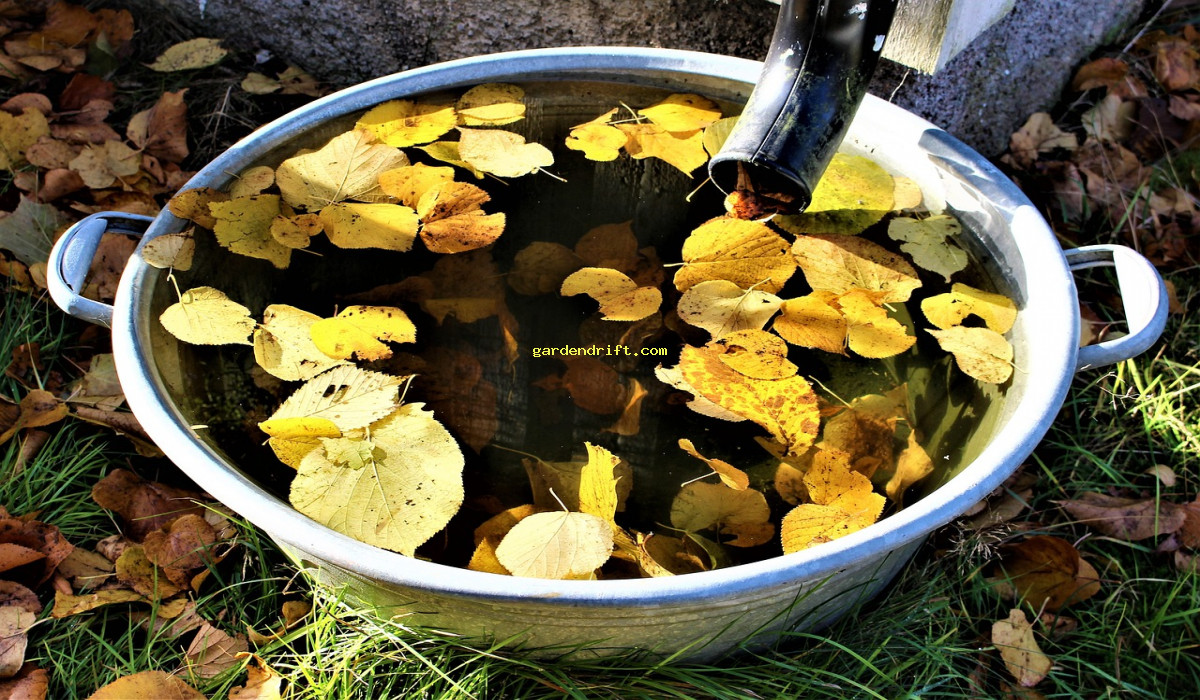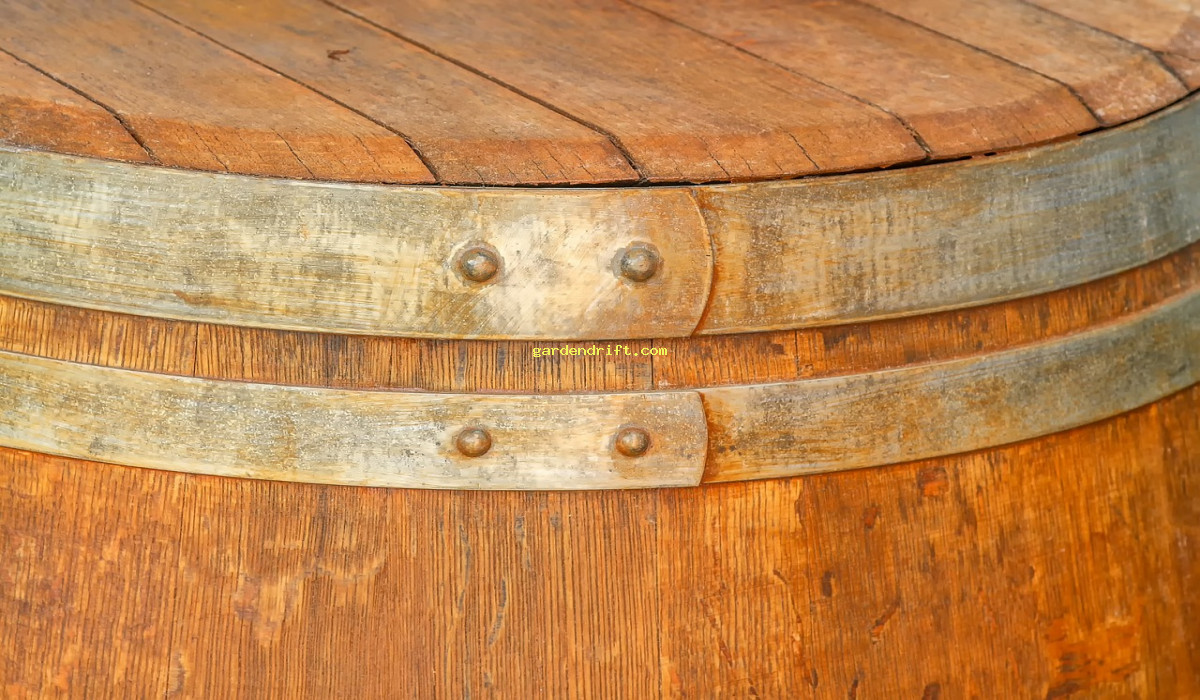5 Easy Steps to Building Your Own Rain Barrel. Learn the simple steps on how to make a rain barrel and save money on your water bill while also helping the environment. Follow our easy guide to creating your own DIY rain barrel today!
5 Easy Steps to Building Your Own Rain Barrel

5 Easy Steps to Building Your Own Rain Barrel. water bill while 5 Easy Steps to Building Your Own Rain Barrel
The Benefits of Using a Rain Barrel
A rain barrel is a valuable addition to any home, allowing you to collect and store rainwater for later use. This water is known as “soft water”, and is free from chemicals, making it ideal for use in your garden or for non-potable household tasks. Using a rain barrel can also save you money on your water bill and help reduce the amount of runoff and drainage in your local area, preventing potential flooding. In this guide, we will provide you with a detailed breakdown of how to make a rain barrel and further explore the many benefits of using one.
Materials Needed
Before you start building your rain barrel, it’s important to gather all the necessary materials. You can purchase a rain barrel kit from a hardware store, but it’s also possible to make one from scratch using readily available materials. Here’s what you’ll need:
- A large plastic or metal container (approximately 55 gallons)
- A spigot or tap
- Adequate screen material
- A drill or jigsaw
- A hose clamp or plumber’s tape
- A downspout diverter kit
- A hacksaw
- A measuring tape
- A pencil or marker
- A utility knife
- A rain barrel stand (optional)
Step 1 – Choose a Location
The first step in the process of making a rain barrel is choosing a suitable location for it. The ideal location would be close to a downspout, within reach of a hose, and on level ground 5 Easy Steps to Building Your Own Rain Barrel. You’ll want to make sure it’s not under any trees or in an area where it could collect debris. A sturdy rain barrel stand can also be used if you prefer to elevate the barrel.
Step 2 – Prepare the Rain Barrel
Once you have chosen the location, you’ll need to prepare the rain barrel. Begin by drilling a hole close to the bottom of the barrel, large enough to accommodate the spigot or tap. Then, using a hacksaw, cut a hole the same size as the downspout at the top of the barrel. This is where the water will enter the barrel from your downspout.
Step 3 – Install the Spigot or Tap
Next, you’ll need to install the spigot or tap. Place the spigot in the hole you drilled at the bottom of the barrel. Secure it in place with a hose clamp or plumber’s tape. This will prevent any leaks from occurring.
Step 4 – Attach the Screen at the Top
To prevent debris and insects from entering the barrel, you’ll need to attach a screen at the top. Measure the diameter of the barrel’s opening and cut a piece of screen material to match. Use a utility knife to carefully cut the screen to the right size, leaving some extra material around the edges. Then, place the screen over the opening and secure it in place with a strong adhesive or duct tape.
Step 5 – Create the Entry Point for the Downspout
Using the downspout diverter kit, you’ll need to create an entry point for the downspout. This will allow water to enter the barrel when it rains, but also prevent any overflow. Follow the instructions provided with the kit and attach it to your downspout and the hole you cut in the barrel.
Step 6 – Test the Rain Barrel
Before you start using your rain barrel, it’s important to test it. Simply turn on your downspout and see if the water is entering the barrel through the diverter kit. If everything is working correctly 5 Easy Steps to Building Your Own Rain Barrel, you’re ready to start collecting rainwater!
Caring for Your Rain Barrel
To ensure your rain barrel continues to function properly, regular maintenance is necessary. Here are a few tips for caring for your rain barrel:
- Keep the spigot clean and free of debris to prevent clogs.
- Check for leaks or cracks regularly and make any necessary repairs.
- Remove any standing water during the winter to prevent freezing and potential damage to the barrel.
- Empty and clean your rain barrel at least once a year to prevent the buildup of bacteria or algae.
The Benefits of Using a Rain Barrel
Saves Money
Using a rain barrel can save you money on your water bill. By collecting rainwater, you’ll have a free source of “soft water” to use for outdoor tasks such as watering your garden or washing your car.
Reduces Water Runoff and Drainage
Rainwater often carries pollutants and contaminants from roofs and paved surfaces, which then enter our waterways. By using a rain barrel, you’re helping to reduce the amount of runoff and drainage in your area, preventing potential flooding and keeping our waterways clean.
Conserves Water
Water is a precious resource, and using a rain barrel can help conserve it 5 Easy Steps to Building Your Own Rain Barrel. By using rainwater for tasks such as watering plants or washing your car, you’re reducing the amount of potable water you use.
Environmentally Friendly
Using a rain barrel is an environmentally friendly choice as it reduces the amount of energy and chemicals needed to treat and pump water for household use. It also helps to control erosion and provides a supplementary source of water for your plants.
Easy to Install and Maintain
Making a rain barrel and maintaining it is a relatively easy process. With minimal materials and a little bit of time, you can have a rain barrel up and running in no time. Plus, with regular maintenance, your rain barrel will continue to function properly for years to come.
Drought-Proofs Your Garden
During hot and dry periods, a rain barrel can help keep your garden and plants hydrated. By collecting and storing rainwater, you always have a backup source of water for your garden, even during droughts or water restrictions.
Good for Plants
Rainwater is naturally soft and doesn’t contain the chemicals found in treated water, making it a better source of water for your plants. It’s also free of chlorine and fluoride, which can be harmful to some plants.
Lowers Your Carbon Footprint
Using a rain barrel can help reduce your carbon footprint by reducing the amount of energy and chemicals needed to treat and pump water for household use. It’s a small and simple way to make a positive impact on the environment.
Provides a Sense of Self-Sufficiency
Making your own rain barrel and using it to collect rainwater can instill a sense of self-sufficiency and independence. You’ll be able to provide water for your plants and tasks without relying on outside sources.
Can Be Used for Emergency Purposes
In case of emergencies or natural disasters, a rain barrel can serve as a valuable source of clean water 5 Easy Steps to Building Your Own Rain Barrel. It’s always a good idea to have a backup supply of water, and a rain barrel can provide just that 5 Easy Steps to Building Your Own Rain Barrel.
5 Easy Steps to Building Your Own Rain Barrel
5 Easy Steps to Building Your Own Rain Barrel Learn the simple steps on how to make a rain barrel and save money on your water bill while also helping the environment. Follow our easy guide to creating your own DIY rain barrel today!. Rain Barrel 5 Easy Steps to Building Your Own Rain Barrel
How to Build a Rain Barrel for $40 | Ask This Old House
5 Easy Steps to Building Your Own Rain Barrel How to Build a Rain Barrel for $40 | Ask This Old House Video 5 Easy Steps to Building Your Own Rain Barrel
The Benefits of Collecting Rainwater with a DIY Rain Barrel
Rainwater is a valuable resource that is often overlooked. By collecting and storing rainwater in a rain barrel, you can harness its benefits and save money on your water bill. Plus 5 Easy Steps to Building Your Own Rain Barrel, using rainwater for watering your plants and lawn can be more beneficial than tap water because it is free of added chemicals.
While rain barrels can be purchased from home improvement stores, they can also be easily created with a few simple supplies and some DIY skills. In this blog post, we’ll show you how to make a rain barrel so you can start collecting and using rainwater in your own backyard.
Why Make Your Own Rain Barrel?
Making your own rain barrel is an environmentally-friendly and cost-effective way to collect rainwater. But it’s also a fun and rewarding DIY project. You can customize your rain barrel to fit your specific needs and aesthetic preferences, unlike a store-bought option. Plus 5 Easy Steps to Building Your Own Rain Barrel, you’ll have the satisfaction of knowing that you created a functional and eco-friendly tool for water conservation.
Materials You’ll Need to Make a Rain Barrel
To create your own rain barrel, you will need the following materials:
- A large plastic barrel with a lid (e.g. a 55-gallon drum)
- A spigot
- A hose clamp
- A spade or hole cutter
- A drill
- Screen mesh or landscape fabric
- A hose connector
- A gutter
Step-by-Step Guide: How to Make a Rain Barrel
Step 1: Choose a Suitable Barrel
The first step in making your own rain barrel is to choose a suitable barrel. You’ll want to look for a plastic or metal barrel with a lid that can be securely closed. A 55-gallon drum is a popular choice, but you can also use smaller barrels if space is a concern.
Step 2: Drill a Hole for the Spigot
Once you have your barrel, the next step is to create a hole for the spigot. Using a spade or hole cutter, carefully drill a hole near the bottom of the barrel. Make sure the hole is just large enough to fit the spigot.
Step 3: Install the Spigot
Insert the spigot into the hole you drilled and secure it with a hose clamp 5 Easy Steps to Building Your Own Rain Barrel. This will keep the spigot in place and prevent leaks.
Step 4: Create an Overflow Drain
To prevent your rain barrel from overflowing, you’ll need to create an overflow drain. Using a drill, create a small hole near the top of the barrel, opposite of the spigot. This hole will allow excess water to escape when the barrel is full.
Step 5: Add a Screen or Landscape Fabric
To keep debris and insects out of your rain barrel, cover the top with a screen mesh or landscape fabric. This will also prevent algae from growing inside the barrel.
Step 6: Connect the Gutter
Next, you’ll need to connect your gutters to the rain barrel. Using a drill, create a hole in the side of the barrel near the top. Then, attach a hose connector to the hole and connect it to your gutter’s downspout. This will allow rainwater to flow directly into your rain barrel.
Step 7: Secure the Barrel
Finally, make sure the barrel is sturdy and secure in its location. You can place it on a stand or platform to make it easier to access the spigot. Also, ensure that it is placed on a flat surface to prevent tipping.
How much rainwater can a rain barrel hold?
The amount of rainwater a rain barrel can hold will depend on the barrel’s size and the amount of rainfall in your area. A standard 55-gallon barrel will typically fill up with just one inch of rain.
Where should I place my rain barrel?
The ideal location for a rain barrel is under a downspout to collect water directly from your gutters. Make sure the barrel is placed on a flat surface and secure to prevent tipping.
How often should I clean my rain barrel?
It is recommended to clean your rain barrel at least once a year to prevent debris and algae buildup. You may also want to clean it more frequently if you notice a decrease in water flow.
Can I use rainwater from my rain barrel for drinking?
No, rainwater from a rain barrel is not suitable for drinking as it may contain contaminants from your roof’s materials.
In Conclusion
Making a rain barrel is a simple and eco-friendly way to conserve water and save money on your water bill. With some basic supplies and a little bit of DIY knowledge, you can easily create your own rain barrel and reap the many benefits it offers. So why not try it out for yourself and start collecting rainwater to use in your garden and lawn? Your plants and your wallet will thank you.
“Remember, every drop counts, and with a rain barrel, you can make every drop count twice.” 5 Easy Steps to Building Your Own Rain Barrel
 5 Easy Steps to Building Your Own Rain Barrel
5 Easy Steps to Building Your Own Rain Barrel
How do I make a rain barrel at home?
Making a rain barrel at home is actually quite easy. You will need a large plastic or metal barrel, a spigot, a flexible downspout extender, and a drill with a hole saw attachment. First, drill a hole near the bottom of the barrel for the spigot. Then, cut a hole in the top of the barrel for the downspout extender to fit into. Attach the spigot and the downspout extender and your rain barrel is ready to collect rainwater.
How much does it cost to make a rain barrel?
The cost of making a rain barrel will depend on the materials you use and if you need to purchase any tools. On average, a DIY rain barrel can cost anywhere from $20 to $100. However, this is a one-time investment that can save you money in the long run by reducing your water bill.
What are the benefits of using a rain barrel?
There are several benefits to using a rain barrel. Firstly, it helps to conserve water and reduce your water bill. Additionally, rainwater is chlorine-free and better for plants, making it a more eco-friendly option for watering your garden. It also helps to reduce runoff and erosion, and can even be used for recreational activities such as washing cars or filling up a pool.
How big of a rain barrel do I need?
The size of your rain barrel will depend on how much rainwater you will need for your intended use. A typical household will need a minimum of a 50-gallon barrel, but you can go larger if you have the space and need for more water.
Can I drink the water from a rain barrel?
The water collected in a rain barrel is not typically safe for drinking unless it goes through a filtration system. However, it can still be used for other purposes such as watering plants, washing cars, or filling a pool.
How often should I empty my rain barrel?
Answer: It is recommended to empty your rain barrel after every use to prevent any mosquito breeding or bacterial growth. If it doesn’t rain for an extended period of time, you can also empty it to prevent the water from becoming stagnant.
Do I need to cover my rain barrel?
While not necessary, covering your rain barrel can help keep debris and insects out of the barrel. You can use a piece of mesh to cover the opening, allowing water to still flow in but preventing unwanted debris from entering.
How do I maintain my rain barrel?
To maintain your rain barrel, you should periodically clean it to remove any debris or buildup. You should also regularly check the spigot and any other attachments for leaks and repair as needed.
How long does it take to fill a rain barrel?
The time it takes to fill a rain barrel will depend on the size of the barrel and the amount of rain you receive. On average, a 50-gallon rain barrel can fill up in just one moderate rainstorm.
Can I connect multiple rain barrels?
Yes, multiple rain barrels can be connected together to increase the amount of water collected. This is referred to as rain barrel linking and is a great way to maximize your rainwater collection. 5 Easy Steps to Building Your Own Rain Barrel
